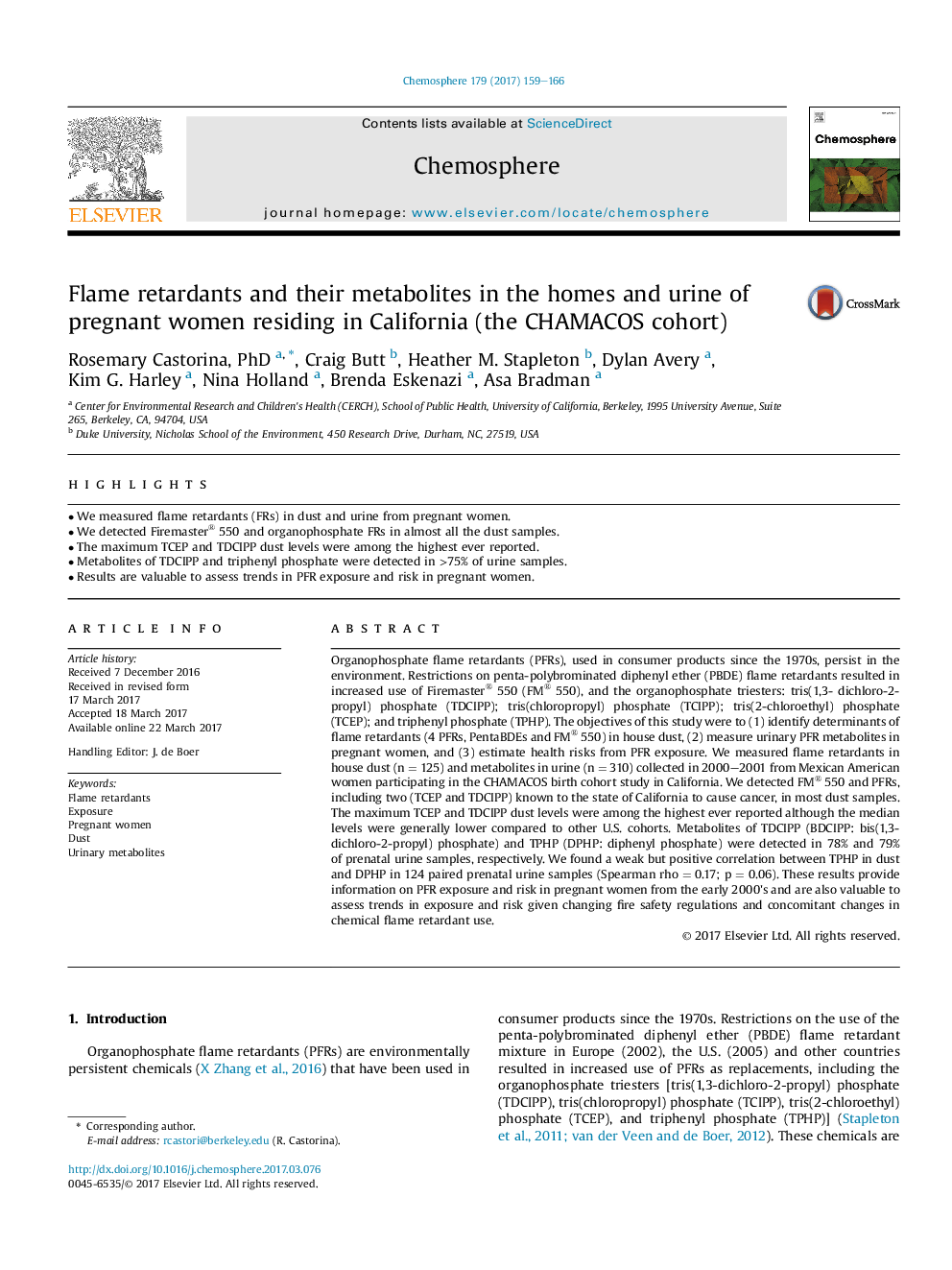| کد مقاله | کد نشریه | سال انتشار | مقاله انگلیسی | نسخه تمام متن |
|---|---|---|---|---|
| 5746540 | 1618792 | 2017 | 8 صفحه PDF | دانلود رایگان |

- We measured flame retardants (FRs) in dust and urine from pregnant women.
- We detected Firemaster® 550 and organophosphate FRs in almost all the dust samples.
- The maximum TCEP and TDCIPP dust levels were among the highest ever reported.
- Metabolites of TDCIPP and triphenyl phosphate were detected in >75% of urine samples.
- Results are valuable to assess trends in PFR exposure and risk in pregnant women.
Organophosphate flame retardants (PFRs), used in consumer products since the 1970s, persist in the environment. Restrictions on penta-polybrominated diphenyl ether (PBDE) flame retardants resulted in increased use of Firemaster® 550 (FM® 550), and the organophosphate triesters: tris(1,3- dichloro-2-propyl) phosphate (TDCIPP); tris(chloropropyl) phosphate (TCIPP); tris(2-chloroethyl) phosphate (TCEP); and triphenyl phosphate (TPHP). The objectives of this study were to (1) identify determinants of flame retardants (4 PFRs, PentaBDEs and FM® 550) in house dust, (2) measure urinary PFR metabolites in pregnant women, and (3) estimate health risks from PFR exposure. We measured flame retardants in house dust (n = 125) and metabolites in urine (n = 310) collected in 2000-2001 from Mexican American women participating in the CHAMACOS birth cohort study in California. We detected FM® 550 and PFRs, including two (TCEP and TDCIPP) known to the state of California to cause cancer, in most dust samples. The maximum TCEP and TDCIPP dust levels were among the highest ever reported although the median levels were generally lower compared to other U.S. cohorts. Metabolites of TDCIPP (BDCIPP: bis(1,3-dichloro-2-propyl) phosphate) and TPHP (DPHP: diphenyl phosphate) were detected in 78% and 79% of prenatal urine samples, respectively. We found a weak but positive correlation between TPHP in dust and DPHP in 124 paired prenatal urine samples (Spearman rho = 0.17; p = 0.06). These results provide information on PFR exposure and risk in pregnant women from the early 2000's and are also valuable to assess trends in exposure and risk given changing fire safety regulations and concomitant changes in chemical flame retardant use.
Journal: Chemosphere - Volume 179, July 2017, Pages 159-166